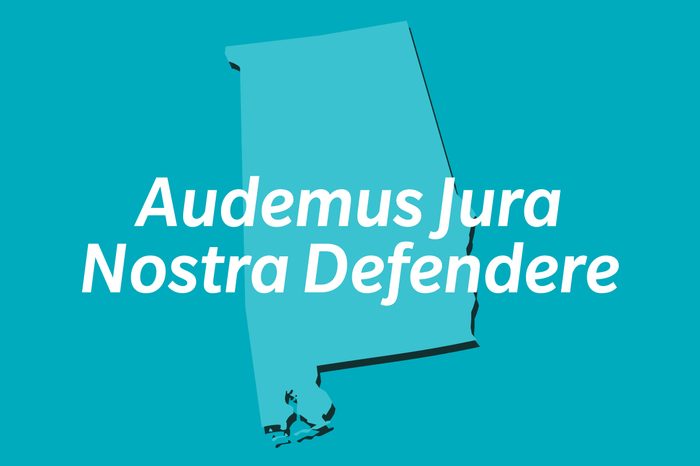
Alabama: Audemus Jura Nostra Defendere
Latin for “We dare maintain our rights,” the motto was meant to “interpret the spirit of our peoples in a terse and energetic sentence,” said Marie Bankhead Owen in 1939, when she was director of Alabama’s state archives. Owen was the one who came up with the motto after finding the sentiment in an 18th-century poem by Sir William Jones called “What Constitutes a State?” The full quote it was taken from reads: “Men who their duties know, but know their rights, and knowing, dare maintain.” The motto was then translated into Latin by a professor from the University of Alabama. Looking for more U.S. trivia? Here are more astonishing facts you never know about the 50 states.
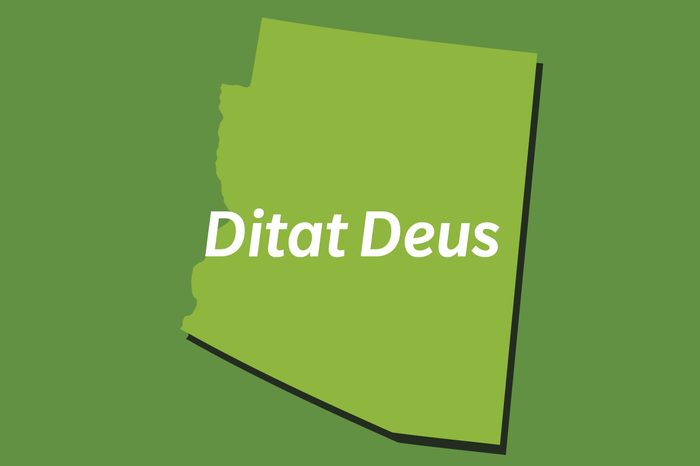
Arizona: Ditat Deus
Arizona’s state motto translates from Latin to “God enriches,” and therein lies a land mine. While no one is disputing that this should be Arizona’s motto, there’s been a battle afoot to keep the motto out of public-school classrooms. It’s not the word God that offends people who have an issue. They object to the fact that it implies that God is active in our affairs, rather than just being someone “we trust” (as in “In God We Trust”). Planning a trip around the U.S.? Here’s the ultimate American road trip guide.

Alaska: North to the Future
Alaska’s motto, “North to the Future,” was created by Richard Peter, a newsman from Juneau, Alaska. It’s meant to represent Alaska as a land of promise, and it was adopted in 1967 during the 100th anniversary of the Alaska Purchase. If you’re thinking of relocating, you might want to consider this state. Believe it or not, Alaska will pay you more than $1,000 a year to live there.

Arkansas: Regnant Populus
Latin for “The people rule,” this motto doesn’t stir much controversy (compared with, say, Arizona’s). And South Dakota’s, as you’ll see, is just a tweak away from this. While the origin of the phrase is unknown, some say it was promoted by the recording clerk of the first territorial assembly, Samuel Calhoun Roane. It was adopted in 1864, albeit in the form of Regnant Populi, which can be loosely translated as “Some people rule.” In 1907, Acting Governor Xenophon O. Pindall changed it to Regnant Populus to make it more egalitarian.
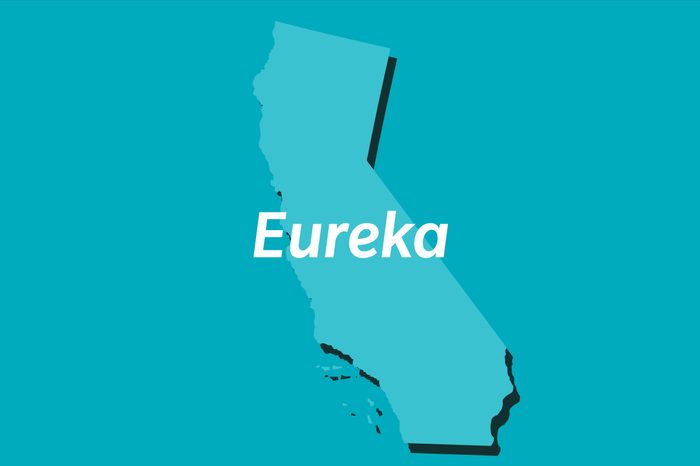
California: Eureka
Eureka is a Greek word that means “I found it.” The word has appeared on California’s state seal since 1849 and was probably intended to refer to the discovery of gold in California. The origin of the word itself goes way: Archimedes, the famed Greek mathematician, is said to have exclaimed “Eureka!” when he discovered a method of determining the purity of gold. Despite appearing on California’s seal for more than a century, the word didn’t become the state’s official motto until 1963.

Colorado: Nil Sine Numine
This motto first appeared on Colorado’s Territorial Seal and means something along the lines of “Nothing Without Providence.” Providence, of course, doesn’t refer to the Rhode Island city. Instead, it refers to a higher spiritual power—possibly (probably) God. Jokesters during Colorado’s early mining days liked to play with the words to say, “Nothing without a new mine.” Find out the most unique destination in Colorado—and every other state.

Connecticut: Qui Transtulit Sustinet
“He who transplanted still sustains” is the translation of Connecticut’s motto, and it has been associated with the geographical area where Connecticut lies since the early days of Saybrook Colony in the 17th century. As to what it means, former State Librarian Charles J. Hoadly pointed to the 80th Psalm as a possible source. It reads, “Thou hast brought a vine out of Egypt: thou hast cast out the heathen, and planted it.”
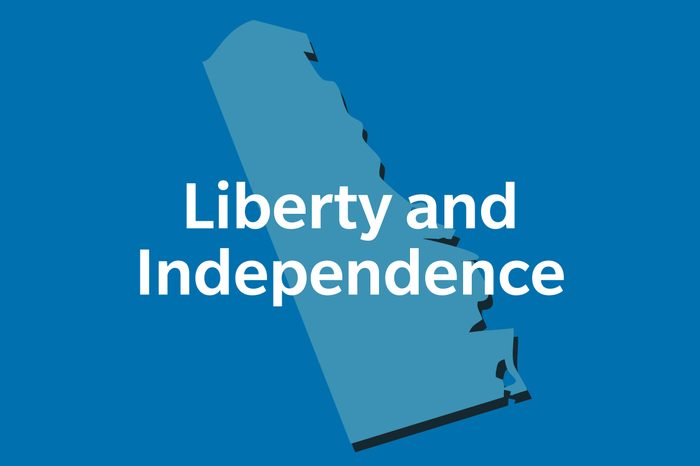
Delaware: Liberty and Independence
Delaware’s motto, “Liberty and Independence,” was derived from the Order of Cincinnati, a hereditary organization of American Revolutionary War officers. It first appeared on the state’s seal in 1847 as an expression of the ideals of American government. Can you guess what Delaware’s most historic landmark is? How about the most historic landmarks in all 50 states?
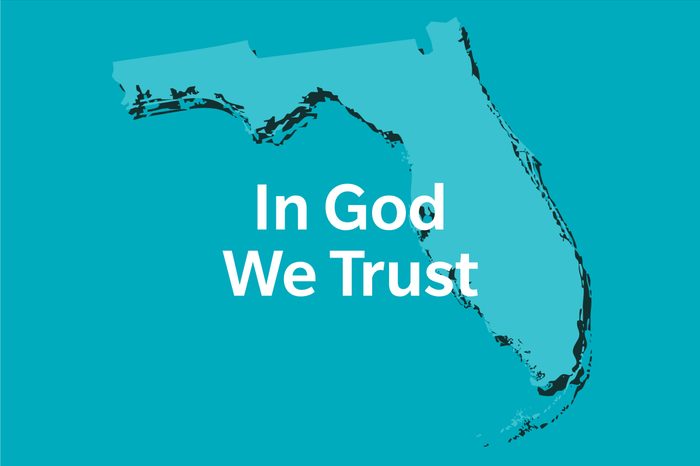
Florida: In God We Trust
Florida has had an official state motto only since 2006. It’s “In God We Trust,” which is the same as that of the United States. It’s also a variation on what has been part of Florida’s state seal since 1868: “In God Is Our Trust.”

Georgia: Wisdom, Justice, and Moderation
Georgia doesn’t have an official motto. But in 1799, when the legislature adopted a new state seal, it featured an arch with word constitution, supported by three pillars. Each pillar was encircled by a word: wisdom, justice, and moderation. Historian Lawton B. Evans has suggested that this represents the three branches of government: legislative (wisdom), judicial (justice), and executive (moderation). These concepts, along with courage, dovetail with the four cardinal virtues that Plato associated with government. While the word courage doesn’t appear, it’s possible that the image of a man with a drawn sword represents this idea.

Hawaii: Ua Mau ke Ea o ka Aina i ka Pono
Hawaii and Washington are the only two states whose mottoes are in an indigenous language. Hawaii’s motto translates to: “The life of the land is perpetuated in righteousness.” Experts suggest that this is a call to “do good things.” It came from a speech made by King Kamehameha III in 1843, in response to Hawaii’s victory over five months of British rule.
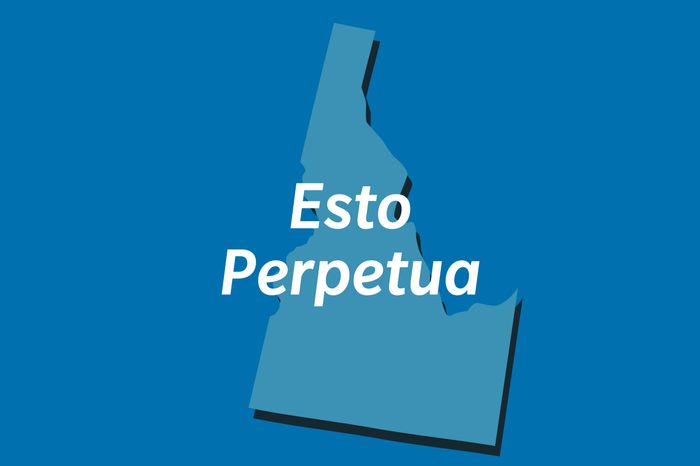
Idaho: Esto Perpetua
Idaho’s state motto is Latin for “Be eternal,” which is a call for Idaho to endure forever, according to Idaho’s state government. It was chosen the same year Idaho was admitted to the Union (1890). Are you a history buff? See if you know these U.S. state facts everyone gets wrong.
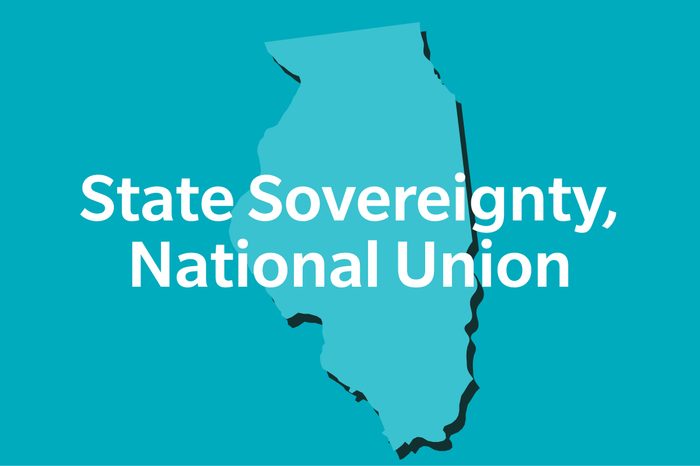
Illinois: State Sovereignty, National Union
“State sovereignty” and “national union” are the twin concepts underlying the organization of the United States, as expressed in the Constitution. These words had been part of the Illinois state seal since 1818, but as the 19th century progressed, along with the debate over the abolishment of slavery, these notions would do battle, particularly in Illinois. This was something that Stephen A. Douglas and his arch political rival, Abraham Lincoln, debated.
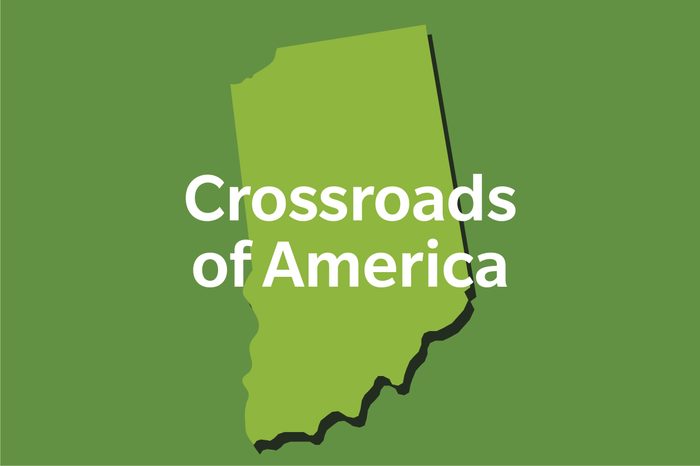
Indiana: Crossroads of America
A 1937 General Assembly resolution made “Crossroads of America” the Indiana state motto. It was a reference to the fact that Indiana was (and still is) literally the place where numerous state and national highways intersect. Indiana is also within a day’s drive for at least two-thirds of the American population.

Iowa: Our Liberties We Prize and Our Rights We Will Maintain
Since 1847, Iowa’s state motto has been: “Our Liberties We Prize and Our Rights We Will Maintain.” But there are some in Iowa who feel that this is no longer the best image for Iowa to portray, calling it a “rallying cry for political activists and traditionalists” alike. Others believe that it’s in line with Iowa’s image as one that’s focused on appreciating the law and acknowledging it as the source of liberty.

Kansas: Ad Astra Per Aspera
When translated from Latin, Kansas’s motto means: “To the stars through difficulties.” It was adopted in 1861, and according to the Office of the Governor of Kansas, it “refers not only to the pioneering spirit of the early settlers, but also the difficult times Kansas went through before becoming a state.” Speaking of Kansas, check out these 56 weird and wonderful facts about the Wizard of Oz.

Kentucky: United We Stand, Divided We Fall; Deo Gratiam Habeamus
On December 20, 1792, six months after Kentucky entered the Union, the first Kentucky General Assembly adopted the official seal of the Commonwealth, including a state motto. Inspired by a popular song from 1768 called “The Liberty Song,” the motto is “United We Stand, Divided We Fall,” although it is often shortened to “United We Stand.” But in 2002, Kentucky’s legislature decided that Kentucky needed a Latin motto as well and came up with “Deo Gratiam Habeamus,” which means “Let us be grateful to God.”
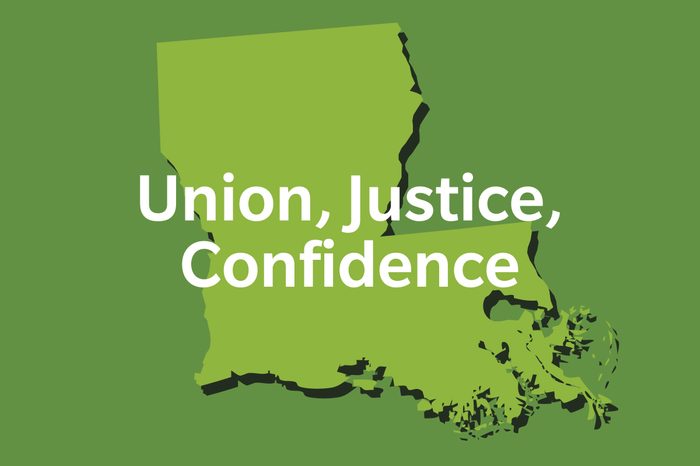
Louisiana: Union, Justice, Confidence
The Louisiana state motto is said to reflect the “unity of purpose presumably experienced by all of Louisiana’s residents, and their collective confidence in the power of justice.” Adopted in 1902, it appears on both the state flag and great seal. Next, test your geography knowledge by seeing how many states you can identify on a completely blank map.

Maine: Dirigo
Adopted in 1820, Maine’s motto, which translates from Latin to “I direct” or “I guide,” is depicted by an image of the North Star, which always points “true north.” Why? The underlying idea is that just as the North Star guides sailors home, Maine guides its citizens toward patriotism. Here’s some more United States trivia your history teacher never taught you.

Maryland: Fatti Maschii, Parole Femine
Maryland’s state motto is the subject of controversy, primarily because no one can agree on how it should be translated into English, according to the Washington Post. Initially, it was translated as: “Men do things, women talk about things.” By 1959, that had rankled enough people for the Maryland legislature to change it to: “Deeds are manly, words are womanly.” Still not quite right in the minds of many, the translation was changed yet again in 1979 to what it still is today: “Manly deeds, womanly words.” That’s still not quite right, according to some, who believe it should read, “Strong deeds, gentle words,” leaving gender out of it altogether.

Massachusetts: Ense Petit Placidam Sub Libertate Quiete
Adopted in 1775, the state motto of Massachusetts is a Latin phrase that means, “By the sword we seek peace, but peace only under liberty.” It is attributed to the English patriot Algernon Sydney, who was executed in 1683 for conspiring to kill King Charles II. His “uncompromising spirit” is said to have been an inspiration to the Founding Fathers.
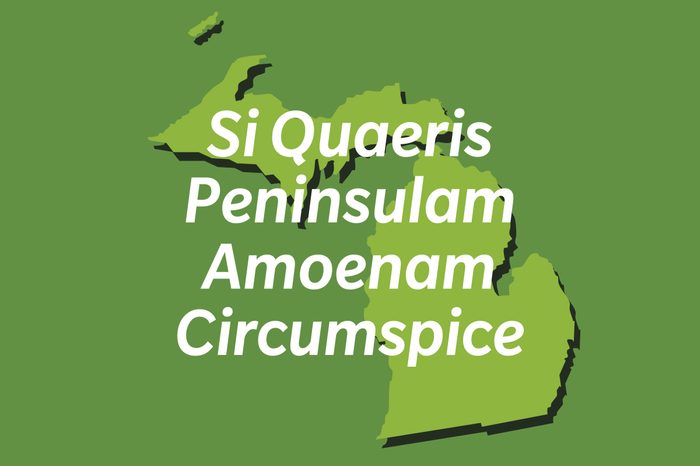
Michigan: Si Quaeris Peninsulam Amoenam Circumspice
Despite being in Latin, Michigan’s motto is one of the most modern. Why? It is clearly meant to market the state as a place to visit and to live. The translation reads: “If you seek a pleasant peninsula, look about you.” The state’s official website confirms that this motto is indeed a call to action, stating, “Michigan is a land of great splendors… Relocating or starting a business in Michigan is a smart choice.”

Minnesota: L’etoile du Nord
Minnesota’s motto, which translates from French into “Star of the North,” was officially adopted as the state motto in 1861. Selected by Henry Sibley, the first governor of Minnesota, it not only speaks to Minnesota’s geographical location but also to the fact that Minnesota’s culture is influenced strongly by the French (who were its first inhabitants). Don’t miss these 50 iconic adventures for each of the 50 states.
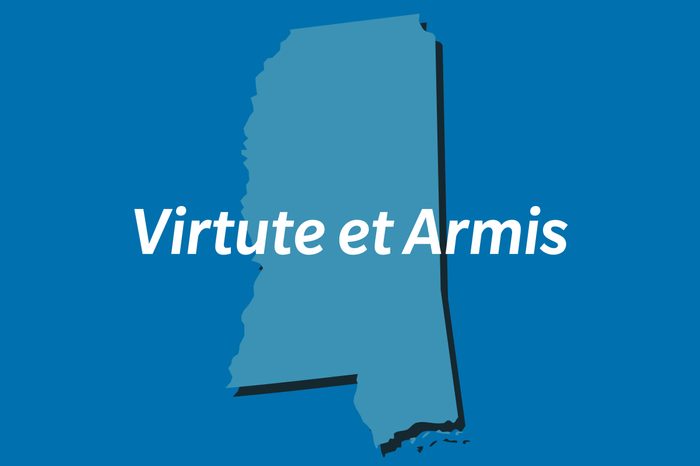
Mississippi: Virtute et Armis
This Latin phrase, which appears on Mississippi’s Coat of Arms, translates to: “By valor and arms.” Although this seems to suggest a link between courage and weapons, some say the motto was actually inspired by a quotation from Lord Gray de Wilton that has a different message. That quote, “Virtute Non Armis Fido,” actually means “I trust in virtue not arms.” While the meaning of this motto is up for interpretation, other things are not—like these most misspelled words in every state.
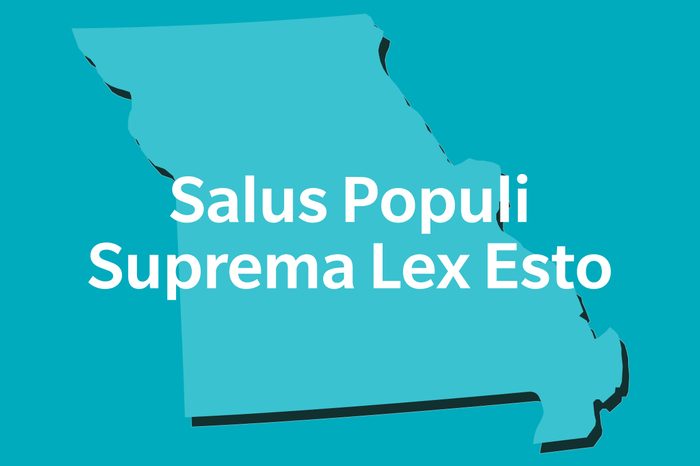
Missouri: Salus Populi Suprema Lex Esto
Translation: “Let the welfare of the people be the supreme law.” This Latin phrase appears on Missouri’s state seal and was designed by Judge Robert William Wells. A noble goal, for sure, this motto was adopted by the Missouri General Assembly on January 11, 1822, around two years after Missouri became a state.

Montana: Oro y Plata
Montana’s motto means “gold and silver” in Spanish and reflects the two elements that were vital to Montana’s economy when it became a state. These days, gold is the primary color of Montana State University, and silver represents the University of Montana. Some ask why copper was left off the motto when it was also an important metal in Montana’s history. According to the Billings Gazette, copper didn’t become a major mining resource in Montana until the 1880s, many years after the motto was adopted.
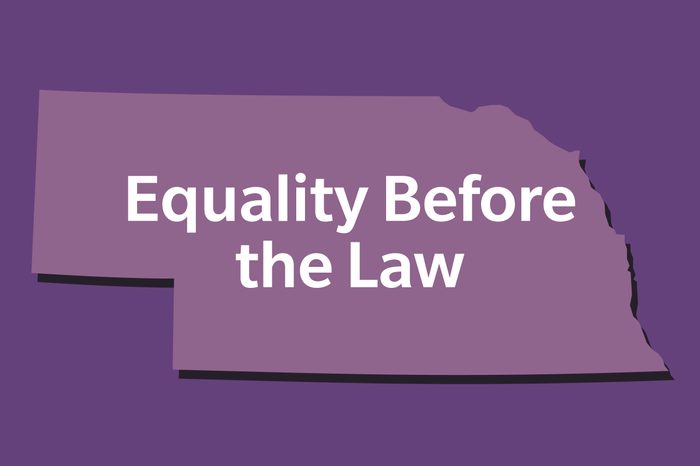
Nebraska: Equality Before the Law
Although Nebraska doesn’t have an official state motto, this phrase is accepted as the motto of sorts because it appears on Nebraska’s official seal and flag. While this can be seen as a call for equality to always come first, it’s more often interpreted to mean that the law is built upon equality—or, in other words, that all people are equal in the eyes of the law.

Nevada: All for Our Country
Nevada’s motto, adopted in 1866, replaced “Volens et Potens,” which means “Willing and Able” in Latin. According to the Las Vegas Review Journal, another motto floated at the time was “The Union Must and Shall Be Preserved.” Ultimately, Nevada embraced the idea that it would give its all to preserve the sanctity of the United States.
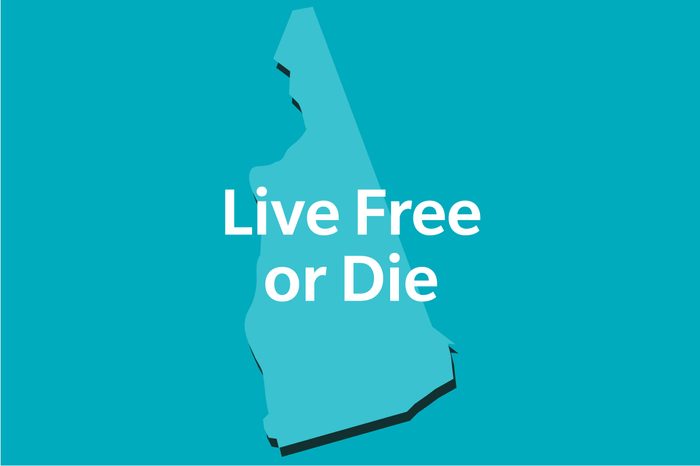
New Hampshire: Live Free or Die
No, the Die Hard franchise did not coin this phrase. These words were written by General John Stark way back in 1809 and became the official motto of New Hampshire in 1945. According to New Hampshire’s official website, the motto was part of a toast that Stark sent to his wartime comrades for an event he couldn’t attend. But this was only part of his sentiment. The full toast read: “Live free or die; death is not the worst of evils.”
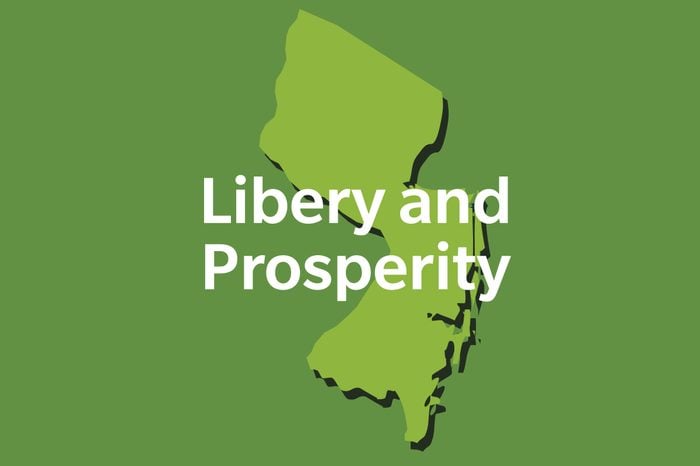
New Jersey: Liberty and Prosperity
New Jersey is another state without an official motto, but “Liberty and Prosperity” gets the unofficial nod. It has appeared on the state seal since 1776, the year New Jersey became a state, and it is said to reflect the desire to be free to be the best one can be—something of particular concern to people in the state around the time of the Revolutionary War.

New Mexico: Crescit Eundo
New Mexico’s motto translates from Latin to “Grows as it goes.” Although it’s unclear when this phrase became the state motto, according to the New Mexico Secretary of State’s website, it has appeared on New Mexico’s official seal since 1882 (although New Mexico didn’t become a state until 1912).
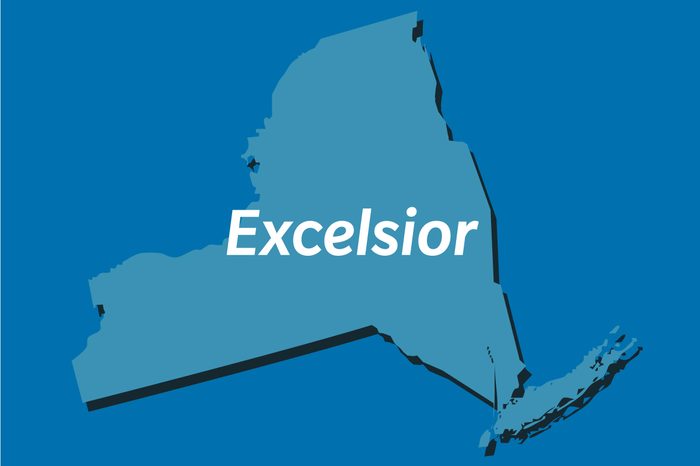
New York: Excelsior
New York’s motto, which means “Ever upward” in Latin, was voted into state law in 1778. It was also included as an element of the Coat of Arms and the flag, both of which also include other upward-themed symbols like an American eagle perched on top of the world and a shield depicting mountains and blue skies.

North Carolina: Esse Quam Videri
Translated from Latin to mean “To be, not to seem,” North Carolina’s motto may be the most philosophical state motto. Adopted in 1893, the phrase has been attributed to Cicero’s De Amitici, in which it was used to admonish those who want to appear to be virtuous but don’t actually act virtuously.
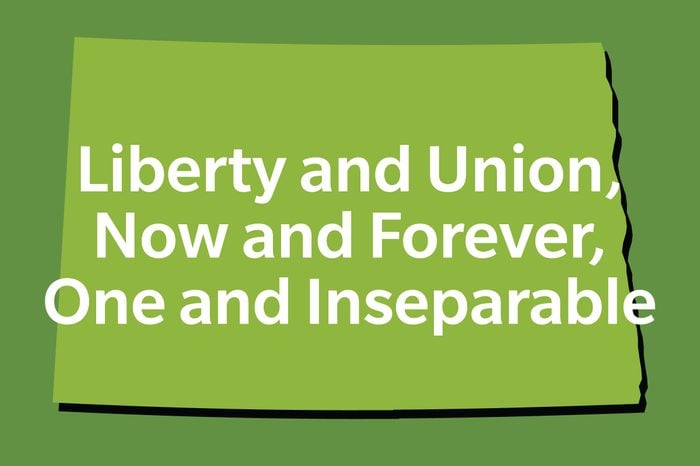
North Dakota: Liberty and Union, Now and Forever, One and Inseparable
The origins of North Dakota’s motto seem to have little to do with North Dakota itself. Adopted in 1863 before North Dakota was even a state, the phrase is a direct quote from an 1830 Senate debate between Daniel Webster of Massachusetts and Robert Y. Hayne of South Carolina. But the sentiment behind the phrase—that liberty is inextricably intertwined with the notion of the Union—apparently resonated with the legislature.

Ohio: With God All Things Are Possible
Ohio adopted this state motto in 1959, and it has been the subject of controversy ever since. In 1997, the American Civil Liberties Union filed a suit against Ohio, claiming that the motto violates the Constitution-granted right to religious freedom and the separation of church and state. Ohio is one of five states to name-check God in their mottoes; the others are Arizona, Florida, Kentucky, and South Dakota. But Ohio’s motto stands alone as a quotation from the Bible. It’s from Matthew 19:26, in which Jesus speaks of the possibility of salvation. After a lengthy trial and appeal process, Ohio won the right to keep its motto.
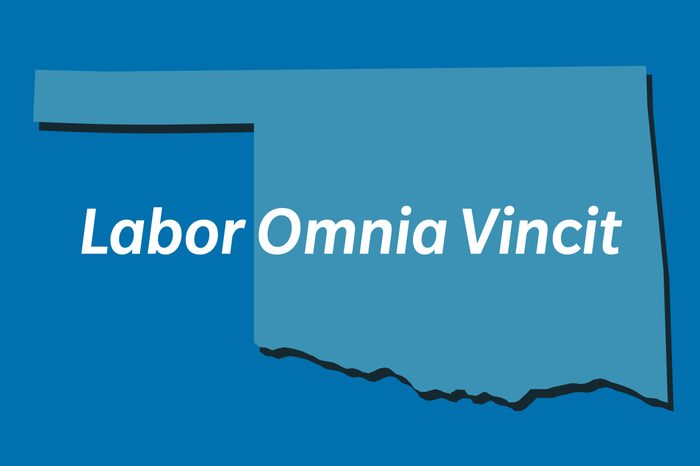
Oklahoma: Labor Omnia Vincit
Meaning “Work conquers all things,” this phrase was referred to as a motto in the 1893 statute describing the Grand Seal of the Territory of Oklahoma, but it was never voted into law. When state representative Danny Morgan realized that in 2012, he began an unsuccessful campaign to adopt “In God We Trust” as the “official” motto.

Oregon: Alis Volat Propriis
Meaning “She flies with her own wings,” Oregon’s motto was adopted in 1987. Intended to honor the spirit of Oregon’s original pioneers, it was actually changed to “The Union” in 1957. The Union proved controversial as a motto, however, because Oregon’s sympathies had been strongly split during the Civil War. Thirty years later, Senate historian Cecil Edwards, Secretary of State Barbara Roberts, and former state Senate President Jason Boe sponsored a bill to change the motto back, arguing it reflected Oregon’s tradition of independence and innovation.

Pennsylvania: Virtue, Liberty and Independence
Pennsylvania’s motto appears on its coat of arms along with a bald eagle. The tableau, which made its debut in 1778, is intended to represent Pennsylvania’s loyalty to the United States. Although it was modified numerous times for the next hundred years, it reverted to its original, and now current, form in 1875.

Rhode Island: Hope
There’s no official documentation from the time when Rhode Island first put the word hope on its seal and flag to explain why it was chosen, notes Rhode Island’s official website. But the most compelling explanation comes from the historical notes of Howard M. Chapin, which were published by the Rhode Island Historical Society in 1930. Connecting the anchor that also appears on the flag, he suggests that the word stems from a biblical phrase that refers to hope as the soul’s anchor.

South Carolina: Animis Opibusque Parati and Dum Spiro Spero
South Carolina has two official mottoes. The first, Animis Opibusque Parati, means “Prepared in mind and resources.” It appears on the lefthand side of the state’s seal. The second, Dum Spiro Spero, means “While I breathe, I hope,” and it appears on right side. The two elliptical areas with each motto are linked by branches of a palmetto tree.

South Dakota: Under God the People Rule
The original design of South Dakota’s state seal, along with the motto, “Under God the People Rule,” dates back to 1885. The use of the word God has been the source of controversy that has, at least for now, been settled in favor of keeping the motto as it is. And this may come in handy at a pub quiz some day: South Dakota is the only state that also has a motto to go with its state flower (the American pasque). Since 1903, state law has required the floral emblem to appear with the motto “I Lead.”

Tennessee: Agriculture and Commerce
Tennessee’s motto has been “Agriculture and Commerce” since 1801, according to the Tennessee State Statistician, but it wasn’t officially adopted until 1987. Prior to that, the words agriculture and commerce simply appeared on the state’s seal, reflecting Tennessee’s two major industries. You won’t want to miss the coolest secret location in Tennessee—or any of the other states.
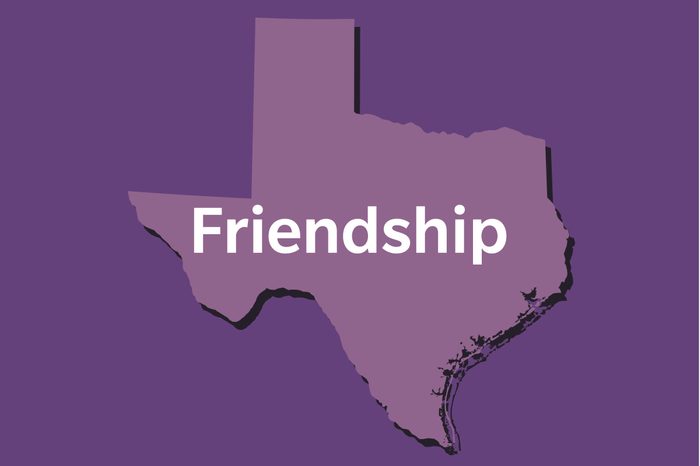
Texas: Friendship
Adopted by the Legislature of the State of Texas in 1930, this one-word motto is a literal take on the state’s name. Texas is the American spelling of the Spanish pronunciation of the Caddo Indian word that means friends or allies.

Utah: Industry
Although it wasn’t until 1959 that “Industry” officially became Utah’s official state motto, it was the unofficial motto for years and has appeared on the state seal since 1896, according to the Utah State Library. “Industry is associated with the [state] symbol of the beehive,” the site explains. “The early pioneers had few material resources at their disposal and therefore had to rely on their own ‘industry’ to survive.”

Vermont: Stella Quarta Decima Fulgeat
Until 1915, Vermont’s motto was: “Freedom and Unity.” And for many in Vermont, that old motto is the only motto. The idea for changing the motto to a Latin phrase came from 15-year-old Angela Kubicke, whose teacher encouraged her to write to her state representative with the idea. Its meaning? “May the 14th star shine bright,” which refers to Vermont being the 14th state to join the Union (in 1791). Find out which Vermont mountain town is a storybook paradise in winter.
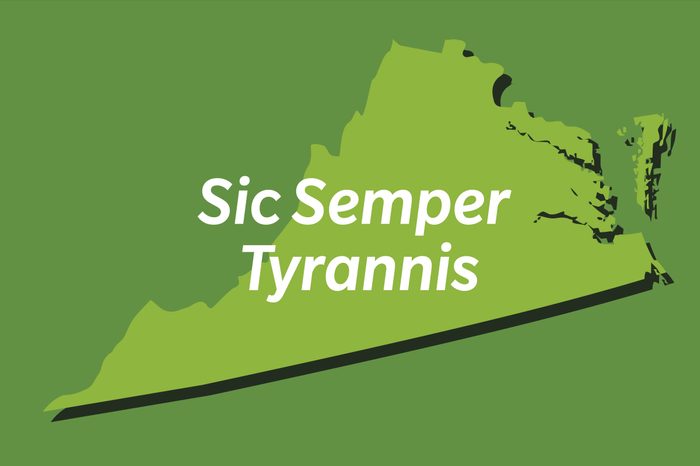
Virginia: Sic Semper Tyrannis

Washington: Al-ki
Washington doesn’t have an official state motto today, but it had one way back when it was just a territory. “Al-ki” or “Alki” (since it’s spelled phonetically, there’s no “correct” spelling) means “bye and bye,” which was colloquial in the 1850s for “into the future.”

West Virginia: Montani Semper Liberi
“Mountaineers are always free” is the translation of this West Virginia motto, adopted in 1872. It’s believed to have been suggested by Joseph H. Diss Debar, a highly educated Frenchman who was one of West Virginia’s most illustrious historical figures. Speaking of illustrious historical figures, do you know about Georgeann Wells and what she contributed to women’s history while playing basketball for West Virginia University?

Wisconsin: Forward
Wisconsin’s motto reflects Wisconsin’s continuous drive to be a national leader, explains the Wisconsin Historical Society. It was adopted in 1851. Today, Wisconsin is leading the way with a forward-looking law that helps ensure you won’t get “catfished.” Now at least a dozen more states are considering similar legislation.

Wyoming: Equal Rights
Wyoming was the first state to grant all women the right to vote, serve on juries, and hold public office. That was way back in 1869, believe it or not. Proud of their progressiveness, they subsequently adopted “Equal Rights” as a motto. Wyoming was so synonymous with women’s suffrage at one point in history that Susan B. Anthony issued a call (largely unheeded) for women to migrate to Wyoming en masse. Next up: Check out the strangest facts about every U.S. state.
